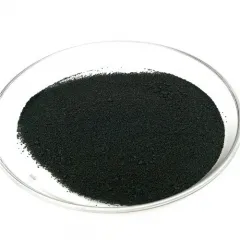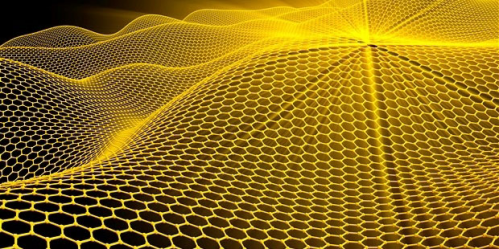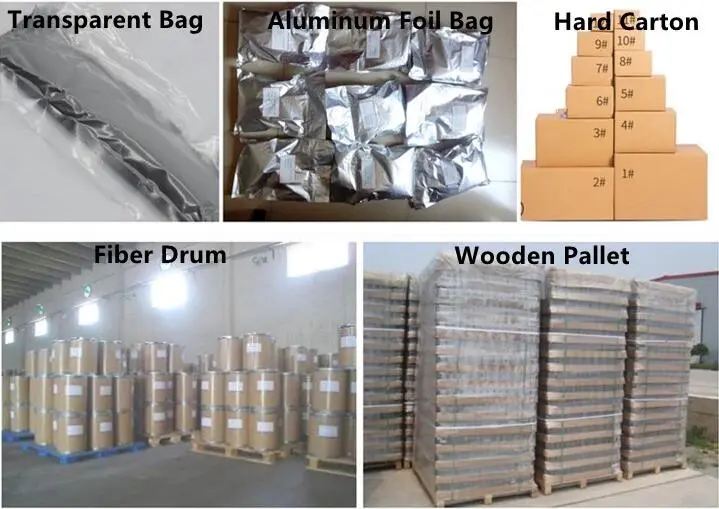Study on the Preparation and Application of Iron Oxide Fe3O4
If you are looking for high-quality products, please feel free to contact us and send an inquiry, email: brad@ihpa.net
Production Method of Iron Oxide Fe3O4:
Preparation by chemical reaction
Chemical reaction preparation is a standard method for the preparation of ferric oxide. The method usually involves mixing an iron salt with an oxidant solution and subsequent heating and cooling treatments to obtain ferric oxide. The specific steps are as follows:
Preparation of reagents: usually use iron salts such as ferric nitrate and ferric sulfate and oxidants such as hydrogen peroxide and potassium permanganate.
Mixing solution: The iron salt and the oxidizing solution are mixed in a particular proportion.
Heating: heating the mixed solution to a specific temperature so that a chemical reaction can occur.
Cooling: The heated solution is cooled to room temperature.
Filtration: The reactants are filtered through a filter to remove unreacted reagents and impurities.
Drying: The filtered product is dried to obtain ferric oxide powder.
Magnetic separation: The black magnetic solid is separated from non-magnetic impurities by magnetic separation to obtain pure ferric oxide.
The advantage of this method is that it can be produced on a large scale, and the product obtained is of high purity and uniform particle size. However, this method requires many chemical reagents and energy and has a particular impact on the environment.

Thermal decomposition method
The thermal decomposition method is a method of preparing ferric tetroxide by heating iron-containing oxides. The method typically involves heating an iron-containing oxide, such as FeOOH, to a temperature that causes it to break down into ferric oxide and water vapor. The specific steps are as follows:
Preparation of raw materials: Iron oxides, such as FeOOH, are usually used.
Heating: The iron oxide is heated at high temperatures.
Thermal decomposition: At a specific temperature, iron-containing oxides decompose into ferric oxide and water vapor.
Cooling: The product of thermal decomposition is cooled to room temperature.
Magnetic separation: The black magnetic solid is separated from non-magnetic impurities by magnetic separation to obtain pure ferric oxide.
The advantage of this method is that ferric tetroxide can be prepared directly from iron-containing oxides, avoiding using chemical reagents. However, this method requires high-temperature heating and large energy requirements, and the purity of the product is relatively low.
Electrochemical method
The electrochemical method is a method of preparing ferric oxide by electrochemical reaction. The method usually involves electrifying an iron anode in an alkaline solution to produce ferric oxide and hydrogen gas. The specific steps are as follows:
Prepare the electrode: Prepare the iron anode.
Electrolysis: An iron anode is energized in an alkaline solution to produce ferric oxide and hydrogen.
Separation: The resulting ferric oxide is separated from hydrogen.
Drying: The iron tetroxide is dried.
Magnetic separation: The black magnetic solid is separated from non-magnetic impurities by magnetic separation to obtain pure ferric oxide.
The advantage of this method is that it can directly prepare ferric oxide by electrochemical reaction, and it is simple to operate and control. However, this method requires the use of electrolytic equipment and high current, the energy demand is significant, and the product size is small, making it challenging to meet the needs of large-scale applications.

Applications of Iron Oxide Fe3O4:
Magnetic material field
The field of magnetic materials is the most prominent application area of ferric oxide. Due to its excellent magnetic properties, ferric oxide is widely used in magnetic materials, such as hard disks, magnetic records, electromagnetic shielding, etc. Ferric oxide, as a high-performance magnetic material, can provide higher storage density and more stable magnetic recording performance in the hard disk and magnetic recording field.
Catalyst field
Ferric oxide is also widely used in the field of catalysts. Due to its high surface area and good catalytic activity, ferric oxide is used as a catalyst for various chemical reactions. For example, ferric oxide can be used in sewage treatment as a catalyst to promote the decomposition of organic matter into small molecules. In organic synthesis, ferric oxide can be used as a catalyst to promote organic reaction. In fuel cells, ferric oxide can be used as a catalyst to promote the reaction of fuel and oxidizer.
Other areas
In the biomedical field, ferric oxide can be used as a drug carrier and gene therapy tool to deliver drugs and genes to the diseased site effectively. In photoelectric conversion, ferric oxide can be used as a light absorber and photoelectric conversion material for solar cells and photoelectric devices. In supercapacitors, ferric oxide can be used as an electrode material and capacitor medium to provide higher electrical capacity and better electrical performance. In addition, ferric oxide can also be used as pigments, coatings, rubber additives and other applications in many fields.
Emerging application areas
In the energy field, ferric oxide can be used as one of the materials of high-efficiency batteries to improve the energy density and charge and discharge performance of batteries. In addition, with the development of nanotechnology, ferric oxide nanomaterials have also shown broad application prospects, such as nanomagnetic liquids, nano drug carriers and so on.
Prospect Market of Iron Oxide Fe3O4:
Industry development trend
The development trend of the industry shows the following characteristics:
High performance, high stability: With the continuous expansion of the application field of ferric oxide, ferric oxide's performance and stability requirements are becoming higher and higher. Therefore, developing high-performance and high-stability ferric oxide products will become an important development direction in the future.
Green environmental protection: With the continuous improvement of environmental protection awareness, ferric oxide preparation methods and application fields will also pay more attention to environmental protection and sustainable development. Green synthesis methods and biodegradable materials will become research hotspots to promote the sustainable development of the ferric oxide industry.
Nanotechnology is a significant development in the direction of future materials science. Ferric oxide, a material with excellent magnetic properties, will also become a future research hotspot. Nano ferric oxide will have broader application prospects, such as nanomagnetic liquid, nano drug carrier, etc.
Market demand
The market demand for ferric oxide mainly comes from the field of magnetic materials and catalysts. With the rapid development and technological progress in these fields, the demand for ferric oxide will continue to grow. At the same time, with the continuous emergence of new technologies and industrial upgrading, the application field of ferric oxide will continue to expand, providing new impetus for the growth of market demand.
The competitive landscape
The ferric oxide market competition pattern is mainly concentrated in some large enterprises. These enterprises have significant advantages in technology research and development, product quality, and market share. However, as the market continues to expand and technology continues to update, there are also opportunities for new players to enter this market and provide higher performance and more environmentally friendly products, thereby gaining market share.
Risks and Challenges
Although the market prospects of ferric oxide are broad, there are also some risks and challenges. Secondly, improving environmental protection requirements will impact the production and use of ferric oxide, and enterprises need to strengthen environmental management and technological innovation to reduce the environmental impact. In addition, the expansion of emerging application areas also requires enterprises to constantly follow up on new technologies and market demands to adapt to market changes.

Supplier of Iron Oxide Fe3O4:
Synthetic Chemical Technology Co. Ltd. is an established global chemical material manufacturer and supplier with over 12 years of experience producing high-quality nanomaterials. These include boride powders, nitride particles, graphite particles, sulfide particles, 3D printing materials, etc.
Contact us to inquire if you are interested in purchasing a high-quality Iron Oxide Fe3O4. (sales5@nanotrun.com)
Inquiry us







